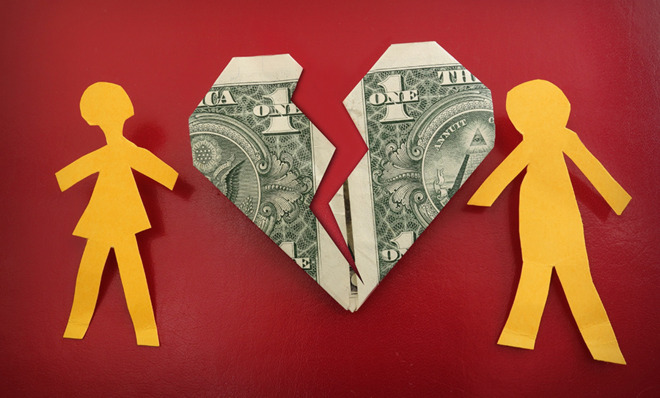Sorry, New York Times: The state of marriage in America is not good
The data says divorce is on the decline. But that doesn't mean the institution of marriage is thriving.


Good news! The conventional wisdom about divorce is a myth. Half of all marriages are not actually ending in divorce. Not by a long shot and not for a long time, according to a smart but frustrating report by Claire Cain Miller for The New York Times's data-driven division, The Upshot.
The piece breathes a sigh of relief. Finally, the bad trends are abating, maybe even reversing for good after a difficult period of adjustment to the sexual revolution, which taught us once and for all that marriage is for love. This happy state of affairs stems almost entirely from the great rectitude and pragmatism of liberal cultural values to boot. We're richer, more liberal, and, well, just better. We love each other more than our grandparents did. Data says so.
Nope.
The Week
Escape your echo chamber. Get the facts behind the news, plus analysis from multiple perspectives.

Sign up for The Week's Free Newsletters
From our morning news briefing to a weekly Good News Newsletter, get the best of The Week delivered directly to your inbox.
From our morning news briefing to a weekly Good News Newsletter, get the best of The Week delivered directly to your inbox.
It turns out that this bit of good news from the Times' hard-nosed ledger sniffers turns out to be a Styles section trend piece in disguise. Let's start with the big sell of the article, the assertion that "marriages in this country are stronger today than they have been in a long time." But that's actually a rather limited observation. Yes, the marriages that do happen do not break up as quickly or as often as marriages from 30 years ago. But the truth is that family instability continues to worsen in the United States. As David Frum pointed out, a declining divorce rate is perfectly consistent with an ever-falling rate of marriage and a rising rate of out-of-wedlock childbirth.
If there is one finding in social science rock solid enough not to be mere post-propter-hoc speculation or a bias toward correlation, it is that children do best in intact, two–biological parent homes. Which means that, despite the happy news for Times readers, children as a class are having a rougher time as marriage culture continues to erode for the rest of us.
Then there are problems with the details of the article. The Upshot writes that 5 percent more marriages from the 1990s are reaching their 15th anniversary intact than marriages from the 1980s and 70s. Alas, that stat says too little when you take into account the larger story of marriage's decline. In 1956, the rate of out-of-wedlock births among non-Hispanic whites was 1.9 percent. In 1990 it was 16.9 percent. Now it is around 30 percent. The rate of out-of-wedlock births among blacks is much worse, a telling indicator of where those with lower incomes are headed.
And, as a side note, even a 15th anniversary is no guarantee of lifelong commitment. See the rise of elder divorce.
A free daily email with the biggest news stories of the day – and the best features from TheWeek.com
What of The Upshot's claim (echoed by others) that marriage has become more successful now that love, thanks to the sexual revolution, has become the ultimate criteria for marriage? The idea is that, once for all, people have put aside concerns about property, dowries, and estates and embraced companionate marriage.
This claim is risible. The idea that most marriages were previously loveless, or at least stitched together with much greater indifference to love, is a self-flattering fantasy that recurs constantly. As Ferdinand Mount recounts in his book The Subversive Family, historians since the Victorian era have variously pointed to the medieval period, the Renaissance, or even the Tudor era as a time when romantic love and marriage for love were finally discovered or invented. In fact, testimony to love-marriage has been recorded in every era. Our notions of history are corrupted by the fact that the lives of royalty and other aristocratic classes, where arranged marriage was more common, were better recorded.
Speaking of which, our idea that property and prospect matter so much less now is silly. Marriage patterns are becoming more narrowly class-based than before. There were more marriages contracted across socioeconomic chasms in the bad old 1950s and 60s. And while we like to think that marriages of convenience are a thing of the past, we all know that they exist today, and that the forces of romantic love on the one hand and economic interest on the other can wax and wane. A romantic marriage can easily devolve into a business.
The Upshot also gives fulsome credit to progressive advancements of cohabitation and later-marriage for the slight drop in divorce among the (shrinking) married population. But these are more common on lower economic rungs where divorce hasn't declined as much, or where marriage doesn't even occur. Cohabitation is said to be helping marriages at the top by allowing bad relationships to disintegrate before divorce is necessary. But looked at from a wide-angle perspective, cohabitation looks like a substitute for marriage for many others.
And what The Upshot doesn't consider is whether inequality itself is helping the marriages of the upwardly mobile. The data shows that people who already succeed in many aspects of their life are making successes of their marriages. Far from a progressive dream, we may be returning to the two worlds of aristocracy. A married upper class and an unmarried peasantry is exactly what you see when you look at the British Isles in the early 20th century. Those living in converted Abbeys could keep their marriages together, but 65 percent of Ireland's population was unmarried at the same time, the highest portion in the Western world of that era. There's just more incentive to hold together the "estate of marriage" when the married couple have property that might qualify as an estate.
It's a downer, I know. But far from a trendline of unqualified marital bliss, the prospects for marriage look bleak. And the improved prospects for a certain class of married person may not be caused by liberal values at all, but may be a side effect of concentrated inequality.
The real trend is that marriage is for richer, not poorer. And our only proximate hope is that the rest of America will try to imitate the slightly better marriage patterns of the rich and famous.
Michael Brendan Dougherty is senior correspondent at TheWeek.com. He is the founder and editor of The Slurve, a newsletter about baseball. His work has appeared in The New York Times Magazine, ESPN Magazine, Slate and The American Conservative.
-
 A fentanyl vaccine may be on the horizon
A fentanyl vaccine may be on the horizonUnder the radar Taking a serious jab at the opioid epidemic
-
 The 8 best comedy TV series of 2025
The 8 best comedy TV series of 2025the week recommends From quarterlife crises to Hollywood satires, these were the funniest shows of 2025
-
 Codeword: December 16, 2025
Codeword: December 16, 2025The daily codeword puzzle from The Week
-
 Has Zohran Mamdani shown the Democrats how to win again?
Has Zohran Mamdani shown the Democrats how to win again?Today’s Big Question New York City mayoral election touted as victory for left-wing populists but moderate centrist wins elsewhere present more complex path for Democratic Party
-
 Millions turn out for anti-Trump ‘No Kings’ rallies
Millions turn out for anti-Trump ‘No Kings’ ralliesSpeed Read An estimated 7 million people participated, 2 million more than at the first ‘No Kings’ protest in June
-
 Ghislaine Maxwell: angling for a Trump pardon
Ghislaine Maxwell: angling for a Trump pardonTalking Point Convicted sex trafficker's testimony could shed new light on president's links to Jeffrey Epstein
-
 The last words and final moments of 40 presidents
The last words and final moments of 40 presidentsThe Explainer Some are eloquent quotes worthy of the holders of the highest office in the nation, and others... aren't
-
 The JFK files: the truth at last?
The JFK files: the truth at last?In The Spotlight More than 64,000 previously classified documents relating the 1963 assassination of John F. Kennedy have been released by the Trump administration
-
 'Seriously, not literally': how should the world take Donald Trump?
'Seriously, not literally': how should the world take Donald Trump?Today's big question White House rhetoric and reality look likely to become increasingly blurred
-
 Will Trump's 'madman' strategy pay off?
Will Trump's 'madman' strategy pay off?Today's Big Question Incoming US president likes to seem unpredictable but, this time round, world leaders could be wise to his playbook
-
 Democrats vs. Republicans: who are US billionaires backing?
Democrats vs. Republicans: who are US billionaires backing?The Explainer Younger tech titans join 'boys' club throwing money and support' behind President Trump, while older plutocrats quietly rebuke new administration
